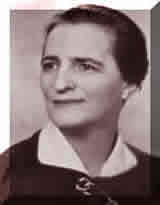 Ruth Drown was a pioneering practitioner of Radionics
– a little-known but spectacularly successful method of diagnosis and
treatment at a distance which utilizes specially designed instruments which
which a practitioner can determine, and cure, the underlying causes of diseases.
Ruth Drown was a pioneering practitioner of Radionics
– a little-known but spectacularly successful method of diagnosis and
treatment at a distance which utilizes specially designed instruments which
which a practitioner can determine, and cure, the underlying causes of diseases.
Using such a "Radionics Machine", a practitioner can diagnose and
treat patients in any location with equal ease – whether in the same room,
or on the other side of the world – by "broadcasting" homeopathic
frequencies that are attuned to be perfectly compatible with the patient's needs
for treatment. The effect is what in quantum physics is referred to as "non-local"
and despite its efficacy, is unexplained within the accepted scientific paradigm.
Ruth Drown was the student and protegé of the inventor of Radionics,
Dr. Albert Abrams (1863–1924), and trained many interested doctors in
the use of Radionics. However, with the success of her work she not only made
friends, but she also found many people envious. The traditional medical doctors,
with the help of the FDA, were looking to "cut off the head" of Radionics
– at that time Ruth Drown herself – at which they were successful.
She was put into jail and while incarcerated they destroyed many of her instruments.
After her release, she was a broken woman and died shortly thereafter from a
stroke in 1962.